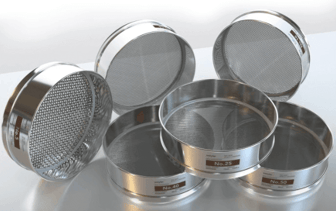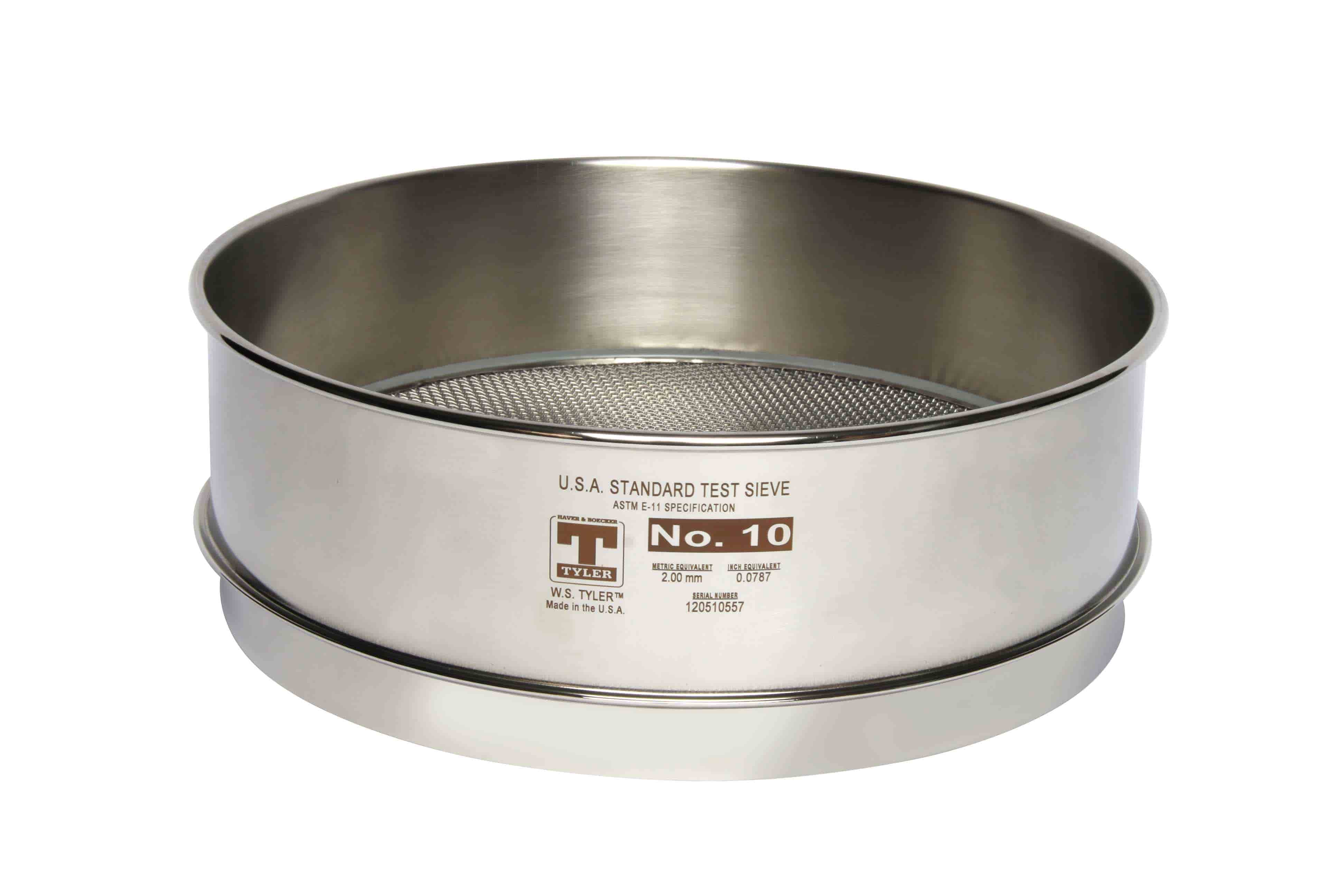Woven Wire Mesh vs Perforated Plate Sieves (Benefits & Drawbacks + Video)
No matter what industry you work in, particle size analysis is a fundamental aspect of quality control. That said, test sieve analysis stands as one of the most reliable particle size analysis methods and allows you to check material quality.
Analytical lab technicians must integrate the best possible equipment to ensure optimal results. This includes the screening medium, such as woven wire test sieve mesh and perforated plate, in their test sieves.
But what’s the difference between woven wire mesh and perforated plate sieves?
With over 140 years of particle size analysis experience, W.S. Tyler takes pride in providing its customers with mesh sieves that are proven to deliver desirable results.
With that, this article will establish what a mesh sieve is, what a perforated plate sieve is, as well as the benefits and drawbacks of each.
What Is a Wire Mesh Sieve?
Mesh sieves are test sieves that house several individual wires that are woven together, forming square openings that allow for accurate particle screening. These square openings are set at predefined intervals by a Standards committee.

To ensure precise openings, woven wire test sieve mesh has a more precise weave technique than other wire mesh products. When weaving test sieve mesh, operators monitor the weaving loom more closely, making sure that the tight tolerances are met throughout the roll.
What Are the Benefits of Mesh Sieves?
Mesh sieves are available in a wide range of mesh specifications. Running from 4” (100mm) to 635 mesh (20um), woven wire mesh sieves offer the level of accuracy needed to maintain a reliable means of quality control.

Perforated plate sieves have limitations due to the laser cutting process. As a result, perforated plate sieves are only available in opening sizes ranging from 125mm to 1mm.
In other words, mesh sieves are ideal for those that need precise particle distribution when testing product quality in a larger particle size range, from coarse to finer materials.
What Are the Drawbacks of Mesh Sieves?
As stated above, mesh sieves are available with openings that are finer than perforated plate sieves. Having said that, the biggest drawback associated with mesh sieves is that fine mesh sieves are far more delicate than perforated plate.
This is due to the fact that finer mesh requires the use of smaller wire diameters. Smaller wire diameters are not as durable as larger wire diameter or perforated plate.
With that, the mesh openings on any size mesh sieve can get altered during operation. If any (or a certain percentage of - based on the Standard) of the mesh openings falls out of spec, you will likely need to replace the entire sieve to ensure reliable results.
What Is a Perforated Plate Sieve?
Perforated plate sieves are test sieves that employ a sheet of metal, either galvanized or stainless steel, with several holes cut out to allow particle screening. These holes are laser cut to ensure accuracy and can be round or square in shape.
What Are the Benefits of Perforated Plate Sieves?
As perforated plate gets constructed from a sheet of steel and not individual wires, perforated plate sieves are more durable than mesh sieves. This is particularly useful in industries that test rugged material, such as the aggregate industry.
As the openings of perforated plate sieves can be either round or square in shape, it is the ideal solution for those testing materials that would otherwise plug square test sieve mesh. These materials include grains, wheat, and tobacco.
What Are the Drawbacks of Perforated Plate Sieves?
One of the biggest drawbacks of perforated plate sieves is the fact that they have limited open area than mesh sieves. Woven wire mesh test sieves have more openings per square inch due the weaving process whereas perforated plate has less open surface area.
As a result, throughput can be reduced when using perforated plate sieves.
Another major drawback is that perforated plate sieves aren't as tightly monitored for tolerances. This can be problematic in industries, such as the food industry, that are heavily regulated and rely on calibrated/certified equipment.
Which Is Right for Me?
The screening media that you integrate into your test sieves ultimately comes down to what your industry standards tell you to use. For example, there are specific aggregate tests throughout the world that specifically call for the use of perforated plate test sieves.
Mesh sieves are generally used when working with particles on the finer side of the spectrum. That said, perforated plate sieves are the ideal solution when working with abnormally shaped particles.
Accurate Test Sieve Analysis Starts With Selecting the Right Screening Medium
Integrating the right screen media into your test sieves will determine the impact your test sieve analysis process has on quality control. This is because most materials have a specific application in-mind when designed.
Mesh sieves consists of individual wires that are woven together to form precise square openings. The accuracy delivered by test sieve mesh allows it to excel in regulated industries such as pharmaceuticals.
Perforated plate sieves consist of sheets of steel that have several laser-cut openings. The durability and shape options for the openings of perforated plate sieves makes them perfect for heavy-duty applications.
Having worked within the world of particle size analysis for over 140 years, W.S. Tyler is here to ensure you integrate the right solution for your application.
For more information about test sieves and test sieve analysis, refer to our Test Sieves, Sieve Shakers & Particle Analysis Equipment Product Guide.
Want all the latest industry trends and innovations sent directly to your inbox? Subscribe to our monthly newsletters today!
About Ronnie Brown
Ronnie is the Content Writer for W.S. Tyler and has four years of experience as a professional writer. He strives to expand his knowledge on all things particle analysis and woven wire mesh to leverage his exceptional writing and graphic design skills, creating a one-of-a-kind experience for customers.




